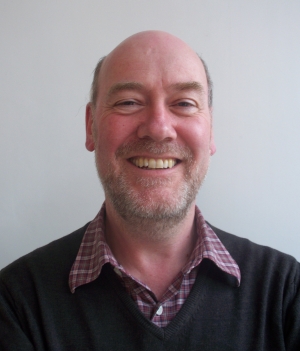Top 'thinker' chooses Deakin
Research news
Australian agriculture looks guaranteed for a boost, with one of the world’s leading chemistry researchers setting his scientific sights on the sector.
Professor Steve Haswell is making the move from the University of Hull, where he is Deputy Dean (Research and Enterprise) in the Faculty of Science and Engineering, to Deakin’s Centre for Regional and Rural Futures (CeRRF).
At the invitation of Professors Peter Hodgson and Neil Barnett, Professor Haswell spent time at Deakin through the “Thinker in Residence” program in 2012. Now - with the goal of helping Australian agriculture and creating a scientific legacy - he is making the move permanent, from April this year.
In his new role, Professor Haswell will be focused on developing low cost technological innovations for agriculture. He is optimistic that he can help the sector to improve productivity, based on technology that he developed in Europe, particularly the microfluidic-based lab-on-a-chip system that can, for example, produce a DNA forensic profile in one hour with no moving parts (on-chip reagents and sample are pumped by electric fields).
“The consequences of doing something for a long time are that you become known for what you do. In the UK I was getting more and more projects of the same type, which stifles the opportunity to do innovative science,” says Professor Haswell.
“There is almost no history of this type of research in Australia, so I can literally make a step change in the science. For all the postdocs and PhDs who have worked with me throughout my career, I felt that if I didn’t take the science to where I believe it can be moved - realising its full potential - then I would be letting them all down.”
Professor Andrew Parratt, Director of CeRRF, said he was “absolutely delighted” that Professor Haswell is coming to Deakin. “His research aligns perfectly with the goals of our centre and will help to position us as a premier centre for producing innovations that benefit rural communities,” Professor Parratt said.
According to Professor Haswell, the introduction of state-of-the-art technology in Australian agriculture has been relatively low. However, he believes that, over the next 10 years, he and his colleagues can enhance precision agriculture relating to soil, crops and animals. He predicts that farmers will be using lab-on-a-chip technology to monitor animals in the field - at watering holes or feeding places, for instance - by using a very small sample, to monitor the health of individual animals.
“We can develop autonomous systems where animals are treated automatically,” he explains. “For instance, if an animal has an infection, this could be monitored on a daily basis, using Cloud computing and wireless networks, and be treated with low doses of antibiotics, and then dosed again the next day, if required, without any human involvement.
“The technology is now ready for implementation. What we have to do relates to how it is configured,” he adds. “This could make a huge difference to Australia, which is very suited to the introduction of such technology, due to its large scale, as well as the challenges of poor, delicate soils that need careful management, coupled with severe environmental conditions, such as drought and flood.”
Share this story
 Professor Steve Haswell hopes to bring a 'scientific legacy' to Australia.
Professor Steve Haswell hopes to bring a 'scientific legacy' to Australia.
